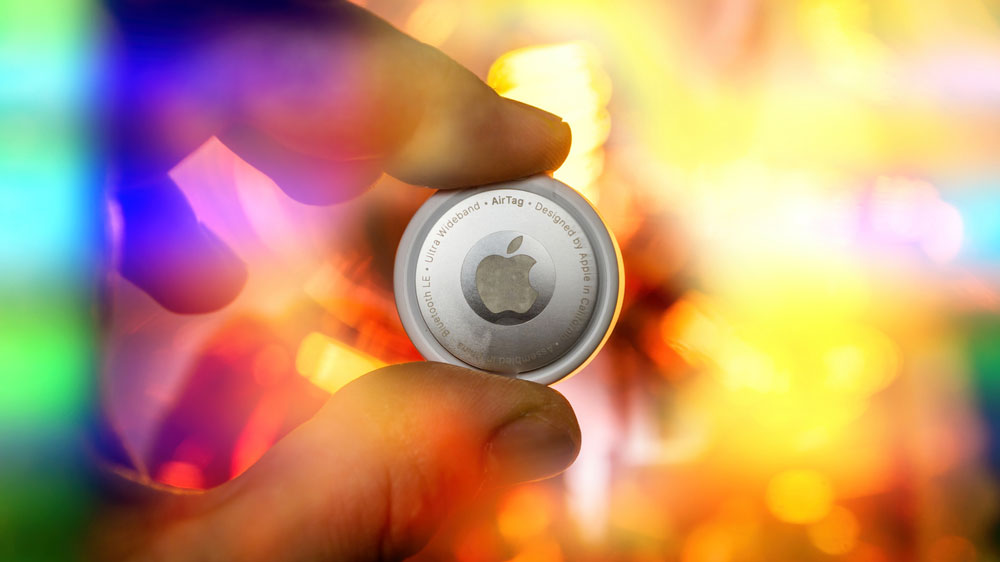AirTags stalking — state AGs for New York, Pennsylvania just issued warnings

The state attorneys general of New York and Pennsylvania yesterday (Feb. 16) issued very similar consumer alerts about the dangers of being stalked by people using Apple AirTags.
"Across the country, Apple AirTags are being misused to track people and their belongings to cause harm," said New York Attorney General Letitia James in her office's warning.
"Tracking people without their awareness or consent is a serious felony and will not be tolerated by my office," she added. "I urge all New Yorkers to pay close attention to their belongings and follow the tips provided by my office to stay safe."
"It's vital all Pennsylvanians, especially women and survivors of sexual assault and abuse, know about how these devices can be misused and turned into a threat," said Pennsylvania Attorney General Josh Shapiro. "In the wrong hands, these tracking devices could lead to disaster. Pennsylvanians should know what to watch out for and how to protect themselves."
Shapiro is currently running for governor, and James is running for re-election in November.
The dangers of AirTag stalking
Ever since Apple's tiny tracking devices were released in April 2021, it's become clear that they're very useful if you want to track people and vehicles as well as pets and keys.
In the past few months, there has been a flurry of local news reports across North America involving women being stalked by strangers who slipped an AirTag into their purses or hid one on their cars before the women left a public place.
Get instant access to breaking news, the hottest reviews, great deals and helpful tips.
No one has been hurt yet that we know of, but one Pennsylvania man allegedly stalked his estranged wife with an AirTag duct-taped inside her car's rear bumper. The AirTag was located and removed, but three weeks later, the man kidnapped his ex-wife and was headed to New York City with her until his car was stopped by police outside the Holland Tunnel.
AirTags use Apple's Find My network so that any nearby iPhone or iPad can pick up their signals and relay them to Apple along with the detecting phone or tablet's location. The AirTag owner is then notified about where the AirTag is.
Because there are hundreds of millions of iPhones in use worldwide, an AirTag can be precisely located by its owner anywhere there are people nearby, even on subways underground.
Apple already has features built into iPhones that warn users if an AirTag that doesn't belong to them has been tracking their movements. The company recently announced software changes that in the next few months should make rogue AirTags even easier to detect and find, at least for iPhone users.
How to protect yourself from AirTag stalking
Following the few introductory paragraphs, James' and Shapiro's consumer alerts contained identical tips for protecting yourself from AirTag stalkers. We'll sum them up.
— Listen for a chirping or beeping noise, which an AirTag will make after it's been separated from its owner's iPhone for at least 24 hours.
— Try to follow the noise to find the AirTag. The attorneys general urge you to check "in bags and pockets, under cars, inside of bumpers, and the back of license plates."
— If you find the AirTag and you have a recent-model iPhone or Android phone, tap the AirTag against the phone. That should bring up a notification on your phone's screen with the AirTag's serial number; take a screenshot of it.
— Disable the AirTag by removing its battery. Press down on the AirTag's back panel and turn the panel counterclockwise. The panel should screw off, and the removable battery is right inside. If you didn't get the serial number in the step above, it should also be printed on the inside of the rear panel.
— Go to the police and report the incident. Don't destroy the AirTag because it could have been genuinely lost by its owner. The serial number will let Apple contact the owner.
— If you have an iPhone, make sure it's updated to at least iOS 14.5. Then keep an eye out for onscreen notifications that say something like "Item Detected Near You," "Unknown Accessory Detected," "Unknown Device Detected" or "Unknown AirTag Moving With You."
— If the AirTag's owner has reported it lost, your notification will say so and will show you how to get it back to its rightful owner.
— If you have an Android phone, there are two apps you can use to detect rogue AirTags. James and Shapiro recommend Apple's own Tracker Detect app, but we prefer a different app called AirGuard because it scans automatically and shows you a map of how an AirTag has been tracking you.
— If you get a notification, you can click the notification and then force the AirTag to start chirping as it would if it were lost. (On Android, Tracker Detect makes you wait 10 minutes to force the AirTag to chirp, but AirGuard lets you do so right away.) Use the directions above to find and disable the AirTag — and get its serial number and report the incident to your local police.
— Remember that Tile trackers and GPS-based trackers can also be used to stalk people. Tile uses a much more limited network, and GPS trackers are more expensive and often require a monthly subscription, but they can be just as effective as AirTags.

Paul Wagenseil is a senior editor at Tom's Guide focused on security and privacy. He has also been a dishwasher, fry cook, long-haul driver, code monkey and video editor. He's been rooting around in the information-security space for more than 15 years at FoxNews.com, SecurityNewsDaily, TechNewsDaily and Tom's Guide, has presented talks at the ShmooCon, DerbyCon and BSides Las Vegas hacker conferences, shown up in random TV news spots and even moderated a panel discussion at the CEDIA home-technology conference. You can follow his rants on Twitter at @snd_wagenseil.
